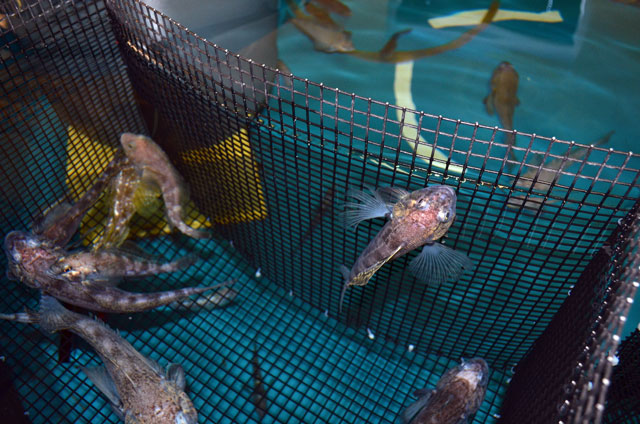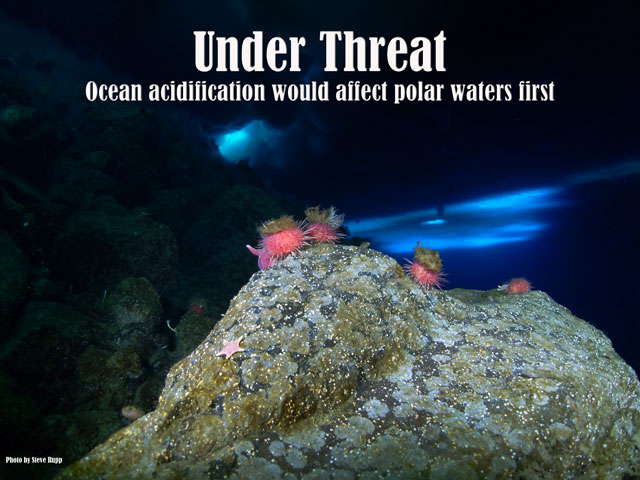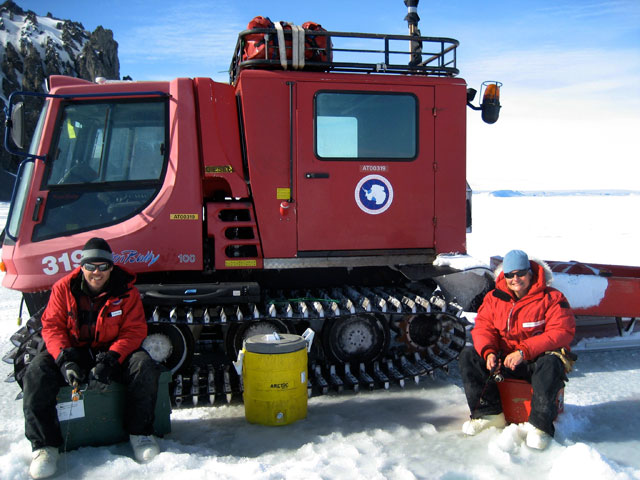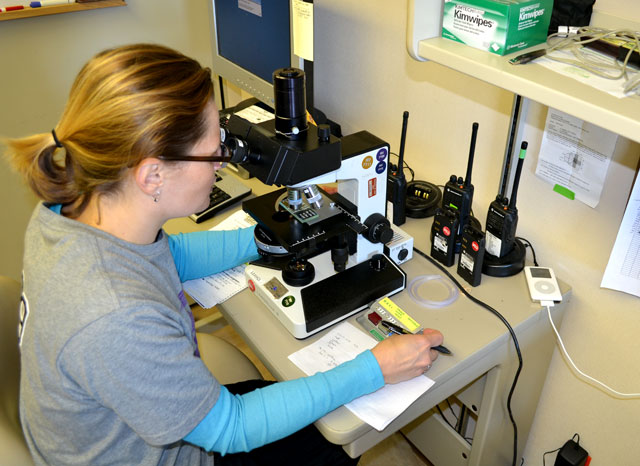|
Not just a shell gameScientists examine how Antarctic icefish may handle warmer, more acidic watersPosted April 6, 2012
Most of the fish that inhabit the Southern Ocean that encircles Antarctica have enjoyed a highly stable, if icy cold, environment for millions of years. Climate change threatens to raise the heat on these so-called icefish in the coming decades and centuries as temperature increases in a manmade greenhouse world. That’s a problem because many species have a very limited thermal tolerance, living at seawater temperatures at about minus 1.8 degrees Celsius. But that’s not the only environmental change under way as humans emit carbon dioxide into the atmosphere. The oceans readily dissolve up to a third of that atmospheric CO2, becoming more acidic in the process, a particularly dangerous and potentially deadly situation for the marine invertebrates with shells or hard exoskeletons. “For fish, in general, I don’t expect the changes we’re going to see in ocean pH will have a major impact on the fish themselves. I wouldn’t anticipate that ocean acidification would kill off fish,” explained Sean Place But just how Antarctic fish may respond to these changes is less certain. Place is the principal investigator on a three-year project to test how the double-jeopardy of higher temperatures and ocean acidification will affect Antarctic icefish. The grant is part of a larger National Science Foundation The NSF’s Office of Polar Programs “Ocean acidification likely affects marine ecosystems, life histories, food webs and biogeochemical cycling,” said Karl Erb, recently retired director of NSF OPP after the ocean acidification awards were announced in 2010. “We need to understand the chemistry of ocean acidification and its interplay with marine biochemical and physiological processes – before Earth’s seas become inhospitable to life as we know it.” While fish should be able to buffer the change in ocean chemistry, it’s unclear if that will come at a cost. For example, some research suggests that shell-building invertebrates may need to devote more resources to building a shell, which could limit their growth or reproduction. “The consequences and how [fish and marine invertebrates] deal with ocean acidification may be very similar,” Place said. “It might require [fish] to use more energy to maintain their ion balance and their acid base balance across their membranes than they are used to. In the end, they might both be energy depleted, and their performance overall might suffer.” The family of Antarctic icefish belongs to the suborder of perciform fish called Notothenioidei, which consists of eight families and more than 120 species. The Notothenoids eventually came to dominate Antarctic waters after the Drake Passage between the continent’s peninsula and the tip of South America opened up about 40 million years ago. That allowed a current of cold water to isolate the continent and turn it into an icehouse (though some scientists dispute the theory; they believe lower levels of greenhouse gases like carbon dioxide led to the deep freeze). In the project’s first year during the 2011-12 field season at McMurdo Station The fish, ranging from the common, pinkish Trematomus bernacchii, or bernie, to the more eel-looking Lycodichthys dearborni, are taken to the aquarium room at McMurdo’s high-tech Albert P. Crary Science and Engineering Center. They are first acclimated to their new environs in normal seawater, before being moved to tanks with different combinations of temperature and concentrations of CO2. One tank bubbles with enough carbon dioxide to mimic projected conditions at the end of the 21st century, when atmospheric CO2 may hit 1,000 parts per million (ppm). Another round tank holds CO2 at current levels, about 395ppm, while upping the temperature by 4 degrees Celsius. A third experiment hits the unluckiest Notothenoids with high levels of CO2 and water temperature. Plexiglass lids built by the station’s carpenters help cut down on off-gassing to maintain the right concentration. “It’s a little uncomfortable for them. They’re definitely not happy,” Place said while watching the various species sitting at the bottom of the double-whammy tank. Respirometry measurements are taken before and after each treatment, which last from a week to 28 days, to see how the different environments affect their oxygen consumption. The fish are later dissected for various analyses, from gene expression to determine what genes are turned on and off under the more stressful conditions, to the search for signs of cellular damage. “We’re trying to go from a whole organism to a cell, and link it all the way through to get a bigger picture of what they’re actually doing,” Place explained. The liver cells are particularly useful for some of the experiments under way. After Place and graduate student Laura Enzor Post-doctoral scholar Mackenzie Zippay “We’re going to do a lot of things with these cells. One of them is to look at DNA damage, as well as looking at cell regulation,” she explained. Place and his team will return to McMurdo next season for a second year of experiments, before moving their operation to the University of Otago “Evolutionarily, they probably don’t have the time to evolve to deal with changes in their environment, so they’re going to have to rely on what they already have in their set of responses right now. We’re looking for a realistic limit to their physiological window,” Place said. NSF-funded research in this article: Sean Place and Jeffry Dudycha, University of South Carolina, Award No. 1040945
|



For USAP Participants |
For The Public |
For Researchers and EducatorsContact UsNational Science FoundationOffice of Polar Programs Geosciences Directorate 2415 Eisenhower Avenue, Suite W7100 Alexandria, VA 22314 Sign up for the NSF Office of Polar Programs newsletter and events. Feedback Form |







